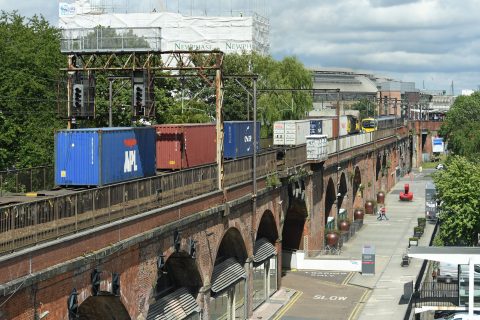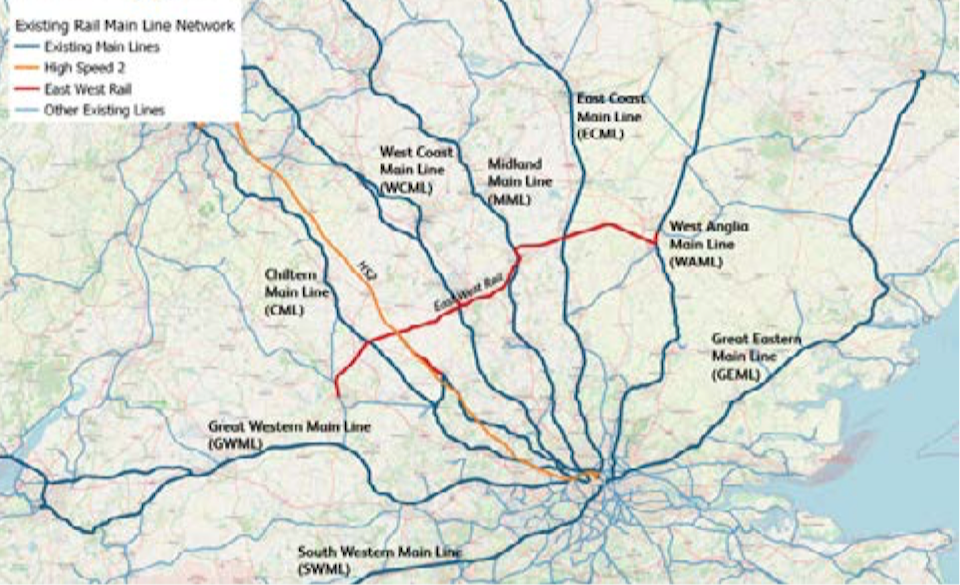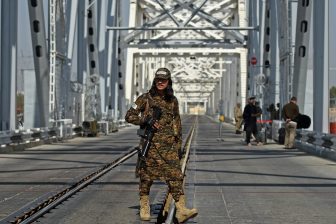
Freight features in new line connecting Oxford and Cambridge
Freight has assumed a new and much higher priority in a bold new vision for the line currently under construction to connect the university cities of Oxford and Cambridge. Network Rail has laid out an enhanced vision for the line, calling the current project the core section, and looking to connect cities as far apart as Southampton and Cardiff in the south west with Norwich and Ipswich in the east. The new strategic statement shows the line as an ambitious opportunity to lead an axis of economic development far beyond its 65 route miles (104 km).
Although primarily a passenger route, Network Rail has identified freight opportunities and connectivity as part of an enhanced Strategic Statement, which recognises the project more appropriately as the new East West Main Line. Ironically, Network Rail as an entity may not last long enough to see the first trains run. The government’s infrastructure agency is due to be superseded by Great British Railways before inauguration of EWML services.
Provide alternative strategic routes for freight
Considerable criticism was made of the government’s lack of ambition for the East West Rail project, when it was announced that the line would be built to minimum service level requirements, with no built-in provision for freight nor any electrification. While passively both goods trains and wiring may be accommodated, only a basic diesel passenger service was specified. However, with environmental issues rising up the political agenda, and the government making it’s own economic ‘levelling up’ commitments, Network Rail, the outgoing infrastructure agency has produced a far more ambitious plan, and given renewed optimism for would-be freight users of the EWML.
“Demand for freight across the national network is set to grow with existing routes nearing capacity in future”, says Network Rail’s just published East West Main Line Strategic Statement. “Additional connections and infrastructure may need to be considered to provide alternative strategic routes for freight, with other infill projects needed to achieve electrified routes using East West Rail infrastructure in future”, they say. The report says NR wants to ensure that infrastructure changes made as part of the East West Rail programme are as flexible as possible for passenger and freight services over the long-term.
New national routing options for freight
The freight lobby has been calling for capacity on the new line, since it was first proposed. Britain’s network, which serves passenger traffic first, is largely radial from terminals in London. It is difficult to navigate from east to west, as freight often would like to do. Like a huge rim around those spokes, the EWML is just the sort of dedicated wheel that freight traffic flows need to avoid awkward and expensive – and often uneconomic north-south detours to reach east-west destinations.

Network Rail has recognised this in their new analysis. “An appropriate service frequency and pattern which best realises that infrastructure changes made as part of the East West Rail programme do not preclude exploration of new national routing options for freight that could accommodate anticipated growth, serve existing or new distribution hubs, and improve freight access from major ports to the rest of the nation”, says their report. “Additional paths and connections for freight services will help to relieve existing infrastructure, notably the North and West London Lines which are heavily used at present for freight joining the WCML [West Coast Main Line] from strategic locations in the East.”
Substantial opportunity for larger freight flows
The new Strategic Statement says demand for rail freight is expected to increase significantly. Unsurprisingly, the highest growth is predicted in intermodal traffic, which NR believes would be the sort fo traffic most easily integrated into any future mixed-traffic planning. Looking closer, East West Rail infrastructure will immediately provide a better routing option for two intermodal flows. Firstly, Southampton to Northamptonshire, currently terminating at Daventry’s DIRFT facility, and with potentially for flows to any new freight interchanges at Northampton, where debate is still heated among the community over proposals for yet more ‘Golden Triangle’ logistics developments. Other potential flows of course include traffic from the port of Felixstowe to Bristol and South Wales.

There is also traffic between Daventry and South Wales that NR believes could also benefit. The report says volumes on each of these flows is currently one or two trains per day, but there is scope for growth. “There is a substantial opportunity to make East West Rail base infrastructure available for larger freight flows and thereby contribute more comprehensively to national environmental targets”, say NR. “East West Rail could play a more substantial role in supporting rail freight by accommodating trains on the Felixstowe to the Midlands and North corridor. This corridor is set to see demand for 60 intermodal trains per day in each direction by the 2040’s.” Any movement from road to rail would be a huge benefit too – not least for beleaguered commuters on the notorious A14 route, which carries much of the road-based intermodal traffic to and from Felixstowe.
Direct connections to other main lines and electrification
Network Rail quote predictions of up to 25 freight trains per day in each direction on the eastern section of East West Rail in future. “Use of an east to north connection at Bletchley for freight movement would be a significant step toward the East West Main Line principles outlined in this statement by providing an alternative freight route, thereby improving connectivity and capacity on the crucial freight corridor between Felixstowe and the Midlands and North”, say NR, noting the significant improvements around Ely as a complimentary driver behind increased growth. “A further major intermodal corridor which could benefit is from Southampton to the Midlands and the North. East West Rail will immediately provide a shorter route from Southampton to the Golden Triangle.”
The wider constraints associated with a more intensive use of East West Rail infrastructure for freight should be understood, says the report. Network Rail list a number of other advantageous works, such as direct connections to other main lines (a fairly obvious advantage for freight operators), to providing suitable long-loops to assist with integrating freight and passenger timetables. Surprisingly, it is consideration for freight that may, eventually bring about the one glaring omission in the project. “The potential for alignment with suitable electrification projects to provide electrified routes for freight and thus more comprehensively contribute to the wider decarbonisation agenda”, concludes the analysis.
Do you want to read the full article?
Thank you for visiting RailFreight.com. Become a member of RailFreight Premium and get full access to all our premium content.
Are you already a member?
Having problems logging in? Call +31(0)10 280 1000 or send an email to customerdesk@promedia.nl.




